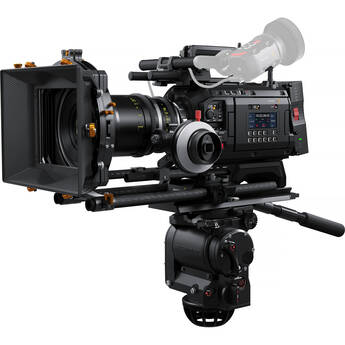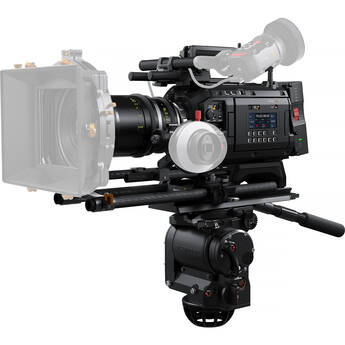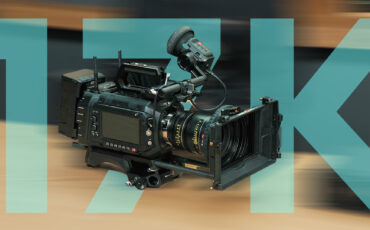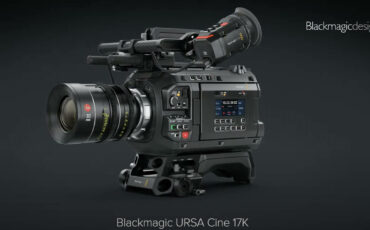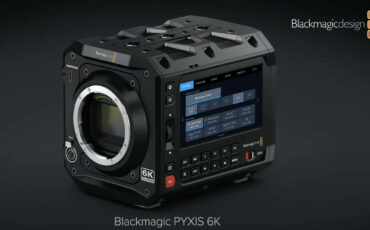Blackmagic URSA Cine 12K Full-Frame Cinema Camera Explained
At NAB 2024, we sat down with Craig Heffernan – Technical Sales Director at Blackmagic Design – to dive deeper into the long list of specs of their newly-announced URSA Cine 12K full-frame cinema camera. Let’s take a look!
At first glance, the new URSA Cine 12K may look almost identical to the existing URSA Mini models. However, upon closer inspection, it immediately becomes clear that Blackmagic Design has followed a “no compromise” approach when redesigning the URSA lineup. By the way, in case you missed it, make sure to check out our previous interview with them on the upcoming 17K 65mm version here.
The list of new features packed in the new URSA Cine 12K is truly extensive and, according to Craig, the company has tried to leverage their 10+ years of expertise in producing cinema cameras – combined with their know-how in post-production workflows – to offer an Hollywood-grade filmmaking tool at a relatively affordable price.
Blackmagic URSA Cine – 12K full-frame sensor
To start off, the new Blackmagic URSA Cine 12K features a new large-format (35.64×23.32mm) RGBW sensor with 12K resolution (12,888×8,040 pixels) with larger photo-sites compared to its Super35 12K predecessor. This should also lead to increased dynamic range, so we’re very curious to put the camera through its paces in our Lab Test for dynamic range and rolling shutter.
Filmmaking for Photographers
Talking about rolling shutter, Craig claims that it should be around 12ms when shooting in 12K Open Gate at 24fps, 6ms in 8K or 4K Open Gate, and less than 5ms in 2.4:1 8K or 4K. If confirmed by independent testing, these would be pretty good figures.
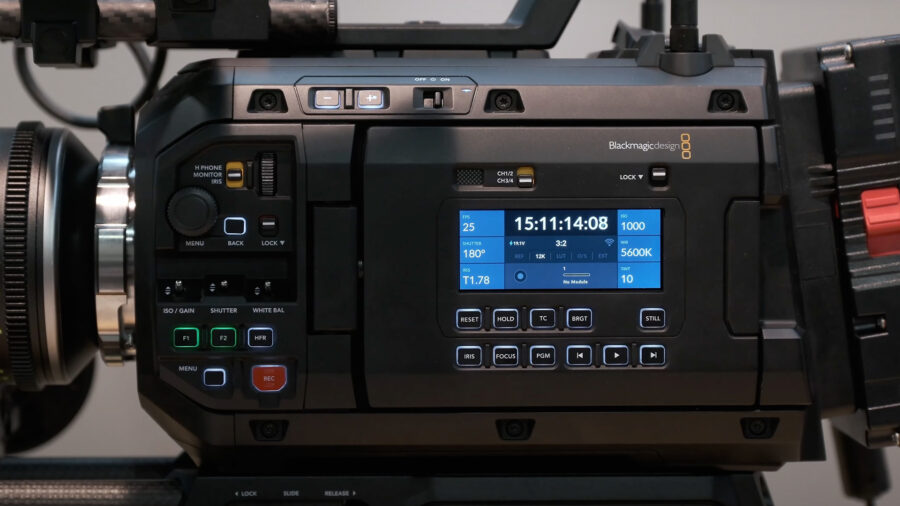
The camera can shoot BRAW in 12K 3:2 Open Gate at up to 80fps or 120fps in 2.4:1 mode. Moreover, 8K and 4K Open Gate RAW recording modes are also available without a crop up to 144fps. This is made possible by in-sensor scaling technology.
A big benefit of having a 3:2 Open Gate mode is that you can exploit the full height of the sensor when shooting with anamorphic lenses. The camera supports de-squeeze function for many different factors, including 1.3, 1.5, 1.6, 1.66, 1.8 and 2x.
Media and power
As you can expect, all this requires a lot of storage space and processing power. For this reason, Blackmagic has developed a proprietary 8TB recording module that relies on the NVMe 2.0 specifications. This solution should offer very high transfer speeds to support recording at the maximum resolution and frame rates.
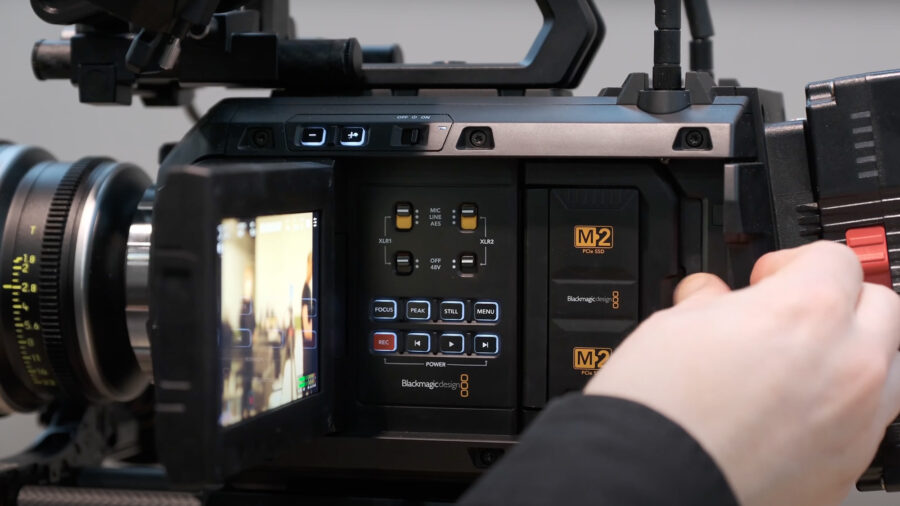
However, physical drives are not the only mean to get your footage to post-production. Indeed, files can also be transferred directly from the camera to Blackmagic Cloud via Wi-Fi (which can be especially useful for H.264 proxies) or 10Gigabit Ethernet. Offloading files via USB-C is also possibile.
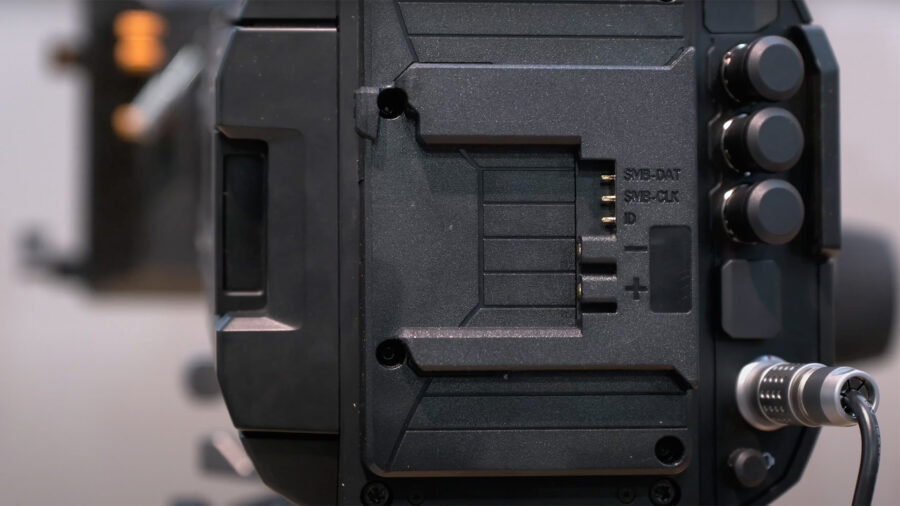
The camera seems to be pretty power-hungry, and this is probably the reason why Blackmagic had to embrace the new ARRI B-Mount 24V battery standard. The included B-mount battery plate integrates a 2-pin Lemo +12V regulated output for accessories. V-mount and Gold mount plates for 14.4V batteries could also become available in the future, but with limitations related to the maximum supported resolution/frame rate combinations.
Redesigned body
The camera now comes with an interchangeable lens mount system that attaches to the body via four screws. Available lens mount options include ARRI PL and LPL, Canon EF, and Hasselblad. Moreover, it integrates built-in ND filters (2/4/6 stops) that are claimed to be color-balanced and designed to minimize IR pollution.
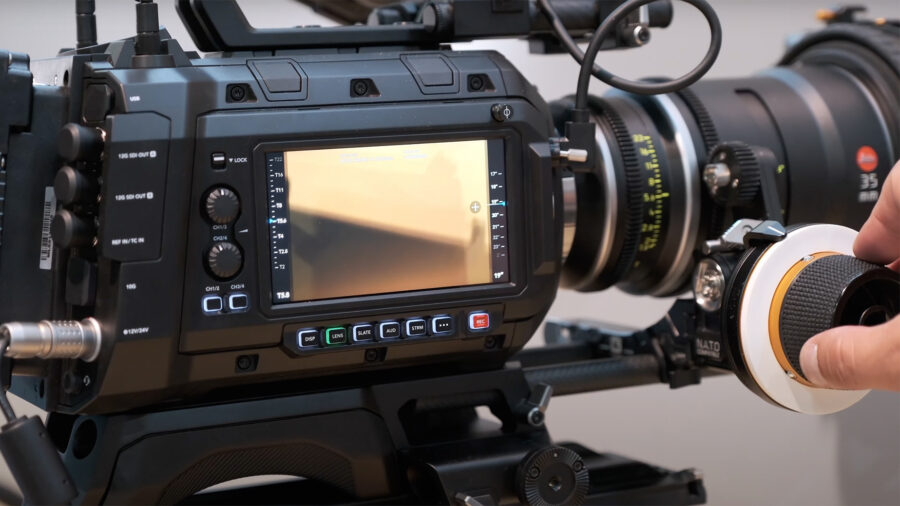
Interestingly, the body features two 5” LCD displays – a flippable one on the operator’s side as well as a fixed one on the camera assistant’s side. Both grant full access to camera settings and can also display lens data in real time when using EF glass. Particularly, when attaching a Canon EF lens for the first time, the camera uses AI to “learn the lens”, including its focal and iris range. As a result, users can now set lens markers directly on the camera, which is a pretty unique feature.
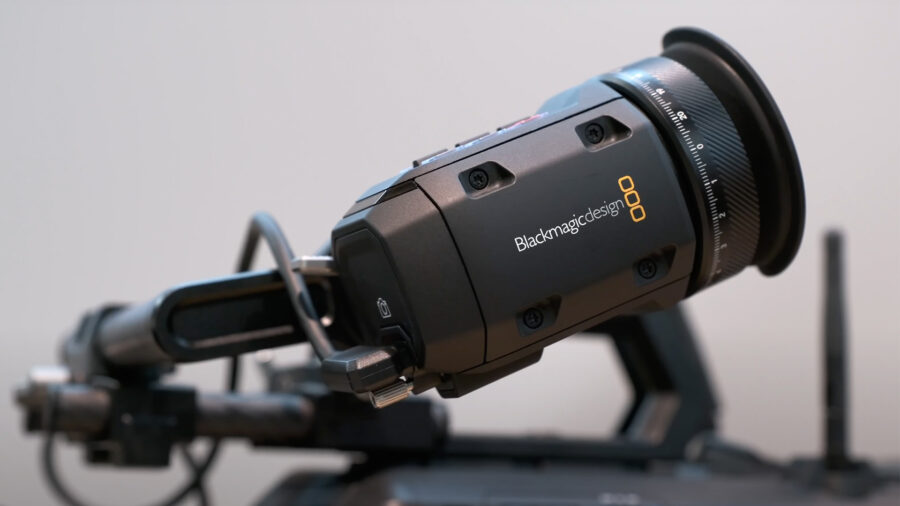
The camera has a very robust I/O layout, which includes 2 12G-SDI outputs, timecode, 10G Ethernet, dual XLR input, 7-pin Lemo (power, run/stop, serial), 3-pin Fischer (power, run/stop), and 4 USB-C ports for firmware update, camera accessories, and, most importantly, their brand new EVF. But that’s a topic for a different video, so please stay tuned for more from NAB.
Price and availability
The new Blackmagic Design URSA Cine 12K cinema camera is now available for pre-order and should start shipping in May. The official retail price is set at $14,995 for the body-only option and $16,495 for a bundle including the new EVF Top Handle Kit. This makes it the most expensive Blackmagic cinema camera ever produced.
For more information, please visit Blackmagic Design’s website here.
What do you think of the new Blackmagic URSA Cine 12K? What feature is more interesting to you? Let us know your thoughts in the comment section below!
